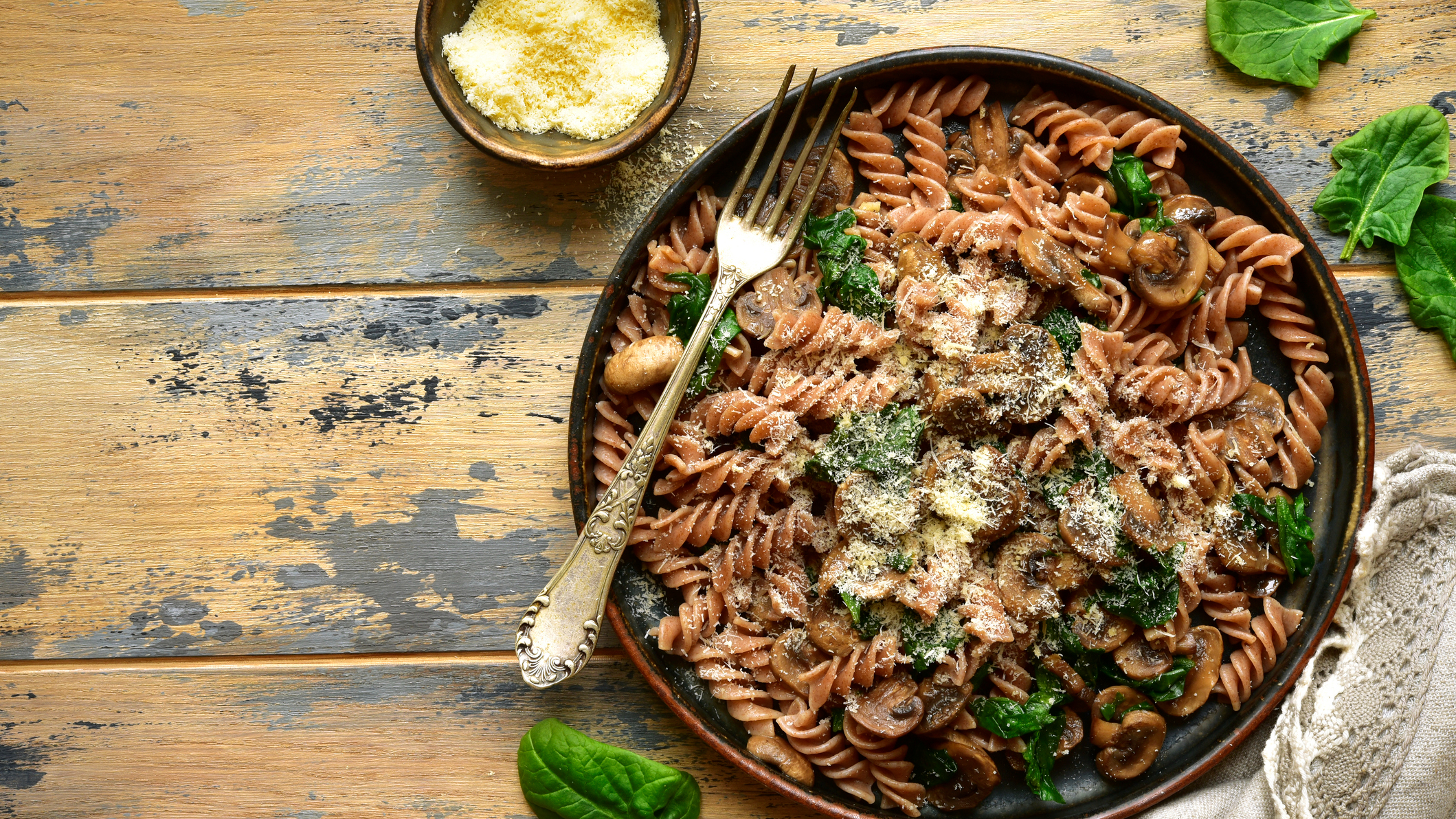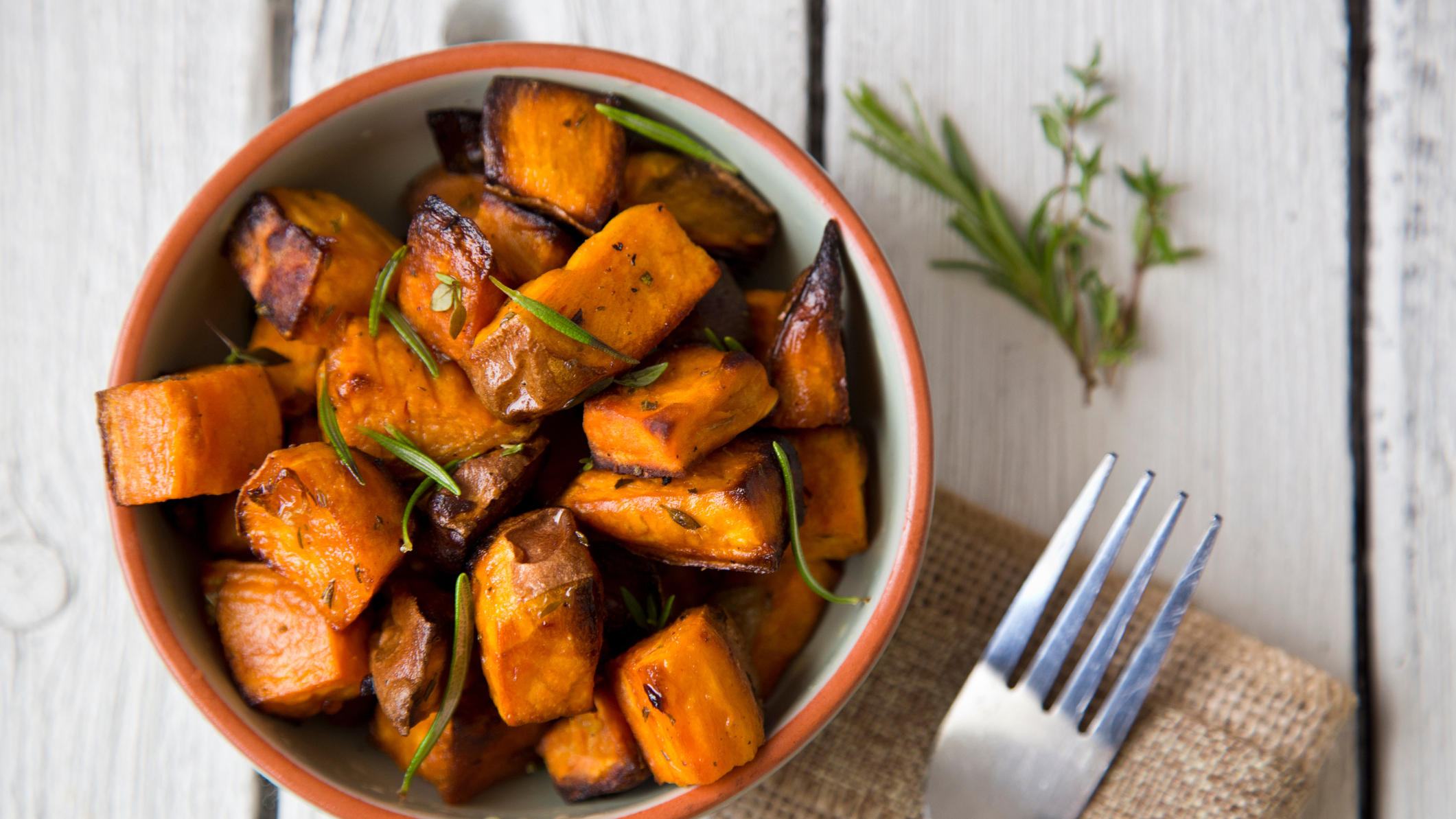The healthy carbs to eat for an easy, nutritious plate upgrade
Make a meal of the most healthy carbs to eat

It’s true that carbohydrates have garnered a bit of a bad rep in recent years. There was the popularity of eating regimes like keto, favored by the Kardashians, while the attention on gluten-free diets lead to bread and pasta being misguidedly treated with widespread suspicion. As such, #lowcarb has more than 26 million tags on Instagram.
But what is also true is that we need carbs in our life in order to, not only survive, but thrive. As one of the three macronutrient groups—alongside protein and fats—they are a key energy source for the body and brain.
That being said, when it comes to the healthy carbs to eat, not all members of this important food group are created equal. Because while white bagels may fall into the same basket as a whole grain bread roll, lunching on one will provide steady, slow-release fuel for hours to come while the other will have you ravenous by 3pm.
Read on to find out how to separate the wheat from the chaff (sorry...) and what to stock your kitchen cupboards with. Short on time? The best meal prep delivery services can ensure you fill up on the good stuff.
- Thinking of cutting grains? Find out is gluten-free healthy in the first place
- Which vegan foods are high in protein? Here's everything you need to know
- What is intuitive eating and could it help you ditch the diet mentality?
Healthy carbs to eat—why does it matter?
“Carbs are an essential part of a well-balanced diet that will help you feel your best,” says Nadia Rawjee, nutritionist and founder of Casa Cura. “They look after your immune system-boosting gut microbiome and steady blood sugar levels.”
Additionally, they are a great way to increase fiber intake, which improves digestion and keeps bloating at bay. Dr. Megan Rossi, a registered dietitian and author of the book Eat More, Live Well, notes that it's a nutrient most of us aren’t getting anywhere nearly enough of. “Many of us are only getting 19 grams a day of fiber on average of the recommended 30g daily,” Dr. Rossi explains. Chew on that.

So, what are the best carbs to consume?
With that in mind, there are some key fibrous options to add to your shopping basket. “I recommend to my clients that they consume grains, like brown rice and wild rice, as well as quinoa and oats,” explains registered nutritionist Louise Lewis.
Additionally, simply opting for carbs that are brown is a good place to start, says Aliza Marogy, a registered nutritional therapist and founder of Inessa. “Whole grain bread, brown rice and whole-wheat pasta are unrefined and will therefore contain many beneficial nutrients, like B-vitamins, iron, zinc, copper, magnesium and manganese," she points out. "It's these nutrients that are lost as part of the refining process to create white carbs."
Another reason to choose wisely? Science has shown that a diet high in whole grains can reduce your risk of heart disease, with one study finding a reduced risk of 47%. There's also research it can help lower the risk of stroke, and evidence of benefits to weight management.
But it’s not just grains…
“Fiber diversity is key,” says Dr. Rossi, of how you should be looking to add a wide variety of such carbs to your plate. This might sound harder than you think—except for the fact that fibrous carbs aren’t just rye bread and whole-grain penne, but also include fruit and vegetables.
“Sweet potatoes are a great carb source, and are better for your blood sugar balance than white ones," says Lewis. "Orange or yellow veg, which also includes butternut squash, have the added benefit of being packed with nutrients like vitamin A." Raspberries, apples, bananas, kiwis and melon are all vitamin-rich and high in fiber. How sweet!

What carbs should you avoid?
It's pretty simple. "Stay away from the refined, processed kinds," says Lewis. "For example, white bread and pasta, as well as snack bars—including those 'healthy' cereal bars—and biscuits, cakes and pastries."
And you'll be glad if you cut down. “The issue with these is the effect they have on your blood sugar," she continues. "Ideally we want a nice even blood sugar throughout the day, but eating a meal high in these carbs can spike this up. And what goes up must come down—so it explains why we may have a 'crash' after eating them, leaving us tired, lethargic and hungry sooner."
Finally, don’t forget about quantity…
Portion control is key, adds Lewis. "I don’t mean weighing foods, but having a balanced plate," she explains. "Half of the plate should be non-starchy vegetables—like broccoli, kale and lettuce—a quarter carbohydrate, which includes the root veggies, and a quarter protein like meat, fish, pulses and beans.”
It also matters what you serve up your carbs with. “A common misconception is that something like a big bowl of porridge for breakfast will fill you up,” she notes. “But while oats are a good choice of carb, eating them alone—or just with water or almond milk—will not fill you up because you have no protein or fat with them. I always suggest balancing it out by adding something like almond butter or seeds like chia seeds, flax, sunflower or pumpkin." You'll be unstoppable!
Lauren is a freelance writer and editor with more than six years of digital and magazine experience. Most recently, she has been the Acting Commissioning Editor of Women's Health—where she co-produced the Going For Goal podcast—and has previously also written news and features for titles including The Telegraph, Grazia, Stylist, Dazed, The Sun's Fabulous, Yahoo Style UK and Get The Gloss. She covers all aspects of lifestyle, specializing in health, beauty, and travel. Can't live without: oat milk lattes, new podcast episodes, long walks, and great skincare.